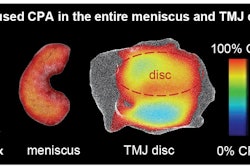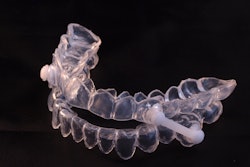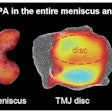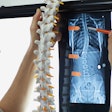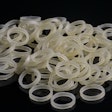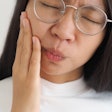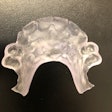
Of the nearly 60 interventions or combination of treatments available to treat chronic jaw pain, only a few like exercises and psychotherapy were likely the most effective in patients. The guidance was published December 15 in BMJ.
Several interventions commonly used to treat chronic pain associated with temporomandibular joint disorders (TMDs) -- including occlusal splints, injectable muscle relaxers, and pain relievers -- were supported by low or very low evidence, according to a review of 153 randomized trials that included 8,713 patients. The recommendation aims to provide contextualized guidance based on the current body of evidence, the authors wrote.
“When restricted to moderate or high certainty evidence, interventions that promote coping and encourage movement and activity were found to be most effective for reducing chronic TMD pain,” wrote the authors, led by Holly Crandon, a researcher at the Michael G. DeGroote Institute for Pain Research and Care at McMaster University in Hamilton, Ontario, Canada.
TMD pain is the most common cause of persistent musculoskeletal pain after lower back pain. Globally, up to 9% of adults are affected by chronic jaw pain. Though multiple conservative, pharmacological, and invasive treatments are available, their comparative effectiveness remains unclear.
To determine the most effective interventions, a recommendation guideline panel comprising eight clinical experts that included dentists, an oral surgeon, and orofacial pain therapist, three patients with chronic TMD pain, and eight methodologists oversaw the review, which was conducted by authors, who were based in Canada, the U.S., China, Colombia, Norway, and Switzerland.
Interventions in the trials reviewed included low-level laser therapy, hyaluronic acid injections, nonsteroidal anti-inflammatory drugs (NSAIDs) plus opioids, discectomy of the temporomandibular joint, arthrocentesis, and more than 50 other treatments, they wrote.
After reviewing the eligible trials, cognitive behavioral therapy augmented with biofeedback or relaxation therapy, therapist-assisted jaw mobilization, and manual trigger point therapy were likely the most effective in treating chronic jaw pain, the authors wrote.
For achieving the minimally important difference in pain relief of 1 cm on a 10-cm visual analogue scale, cognitive behavioral therapy had a risk difference (RD) of 36% (95% confidence interval [CI], 33 to 39). Therapist-assisted jaw mobilization also had an RD of 36% (95% CI, 33 to 39), and manual trigger point therapy had an RD of 32% (95% CI, 29 to 34), they wrote.
Some of the treatments that may be the least effective were capsaicin cream, biofeedback, NSAIDs plus steroids, and steroid injections, the authors wrote.
Nevertheless, the study had limitations, including that most eligible trials for this review excluded patients with persistent jaw pain who also had comorbidities like mental illness or rheumatoid arthritis. For these populations, the generalizability of the results is uncertain, they wrote.
“In this large NMA (network meta-analysis) of randomised controlled trials, moderate certainty evidence or higher shows interventions that promote coping and encourage movement and activity were most effective for reducing chronic pain associated with TMD,” Crandon and colleagues wrote.




